Restored Cathedral of the Good Shepherd a feast for the eyes
It has been three years since the Cathedral of the Good Shepherd closed its doors to the public for a major restoration. Come Nov 20, worshippers will once again gather in the 173-year-old space to celebrate the Feast of Christ The King, one of the great feast days on the Roman Catholic Church calendar. Straits Times executive photojournalist Alphonsus Chern offers you a glimpse of the newly renovated building in Queen Street.
Sign up now: Get ST's newsletters delivered to your inbox
Follow topic:
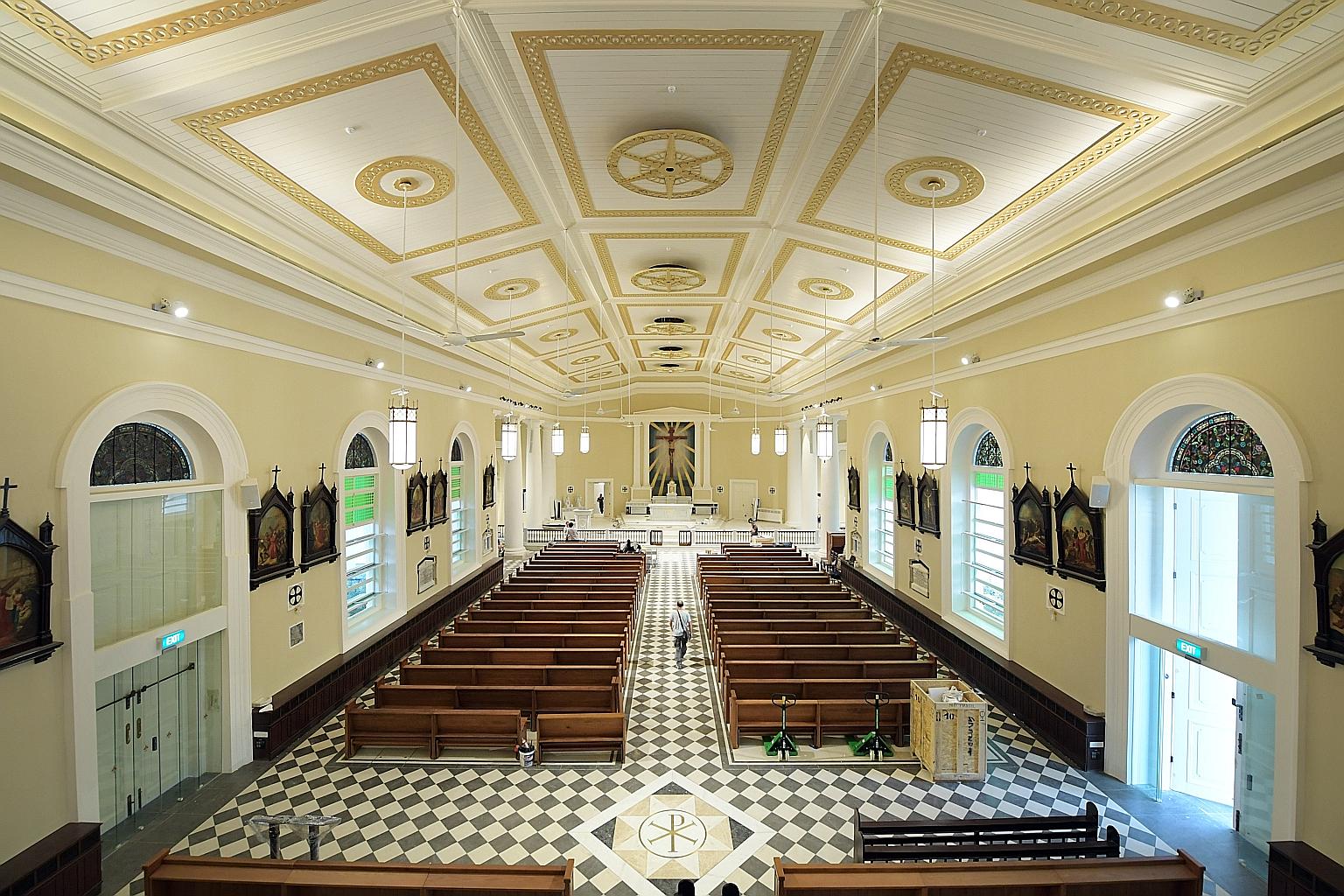
The cathedral’s crucifix has been hung in its original position and the marble altar put up. Back in place also are the semi-circular stained glass panels above the doors, the chandeliers and the Stations of the Cross paintings. The cathedral also has new wooden pews designed to match its neoclassical architecture.
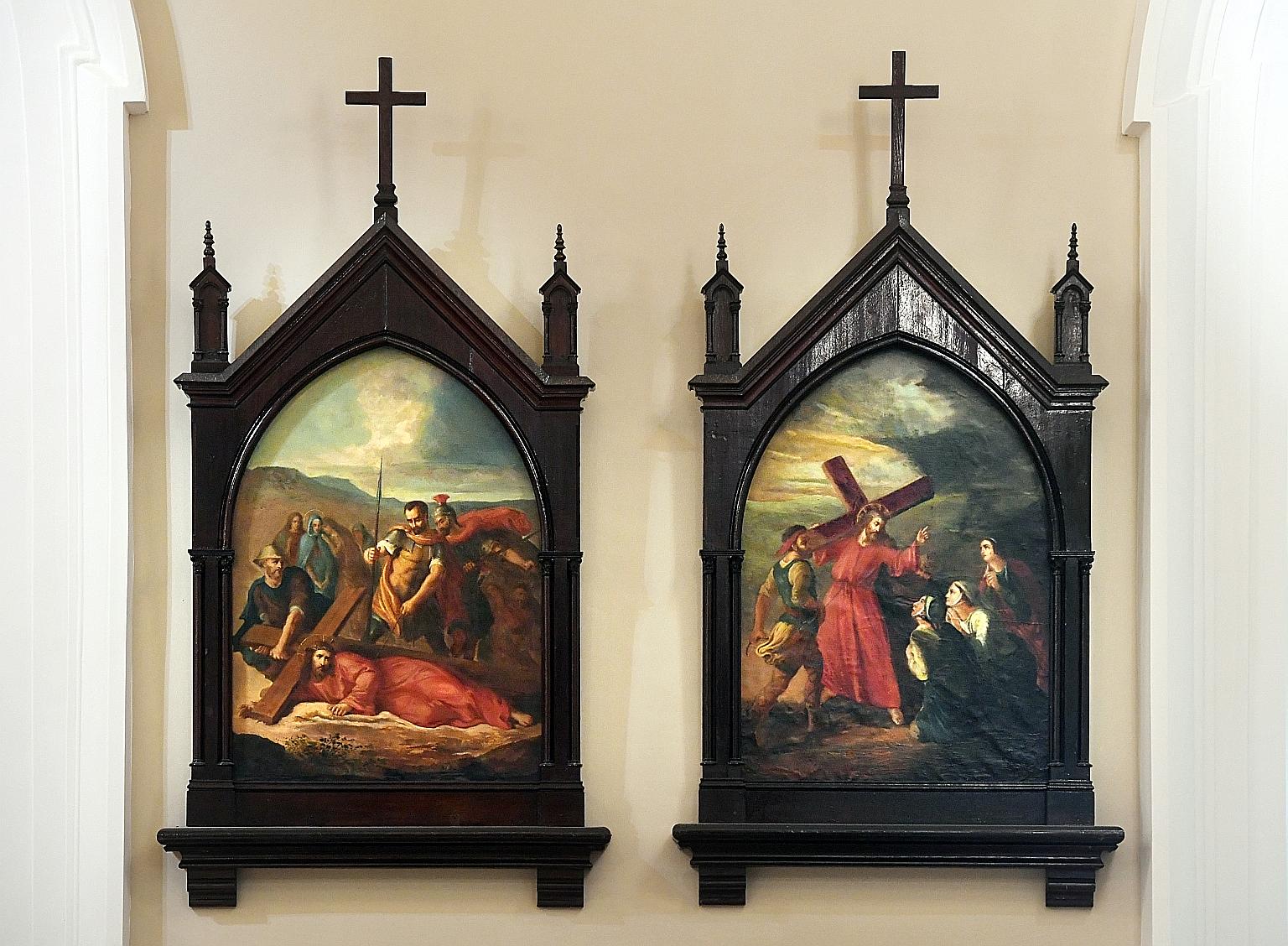
Two of the 14 paintings of the Stations of the Cross which were installed and blessed in 1907 by Bishop Marie-Luc-Alphonse-Emile Barillon of Malacca. The Parisian paintings were bought from the Convent of the Holy Infant Jesus for $1,000, payable over 10 years.
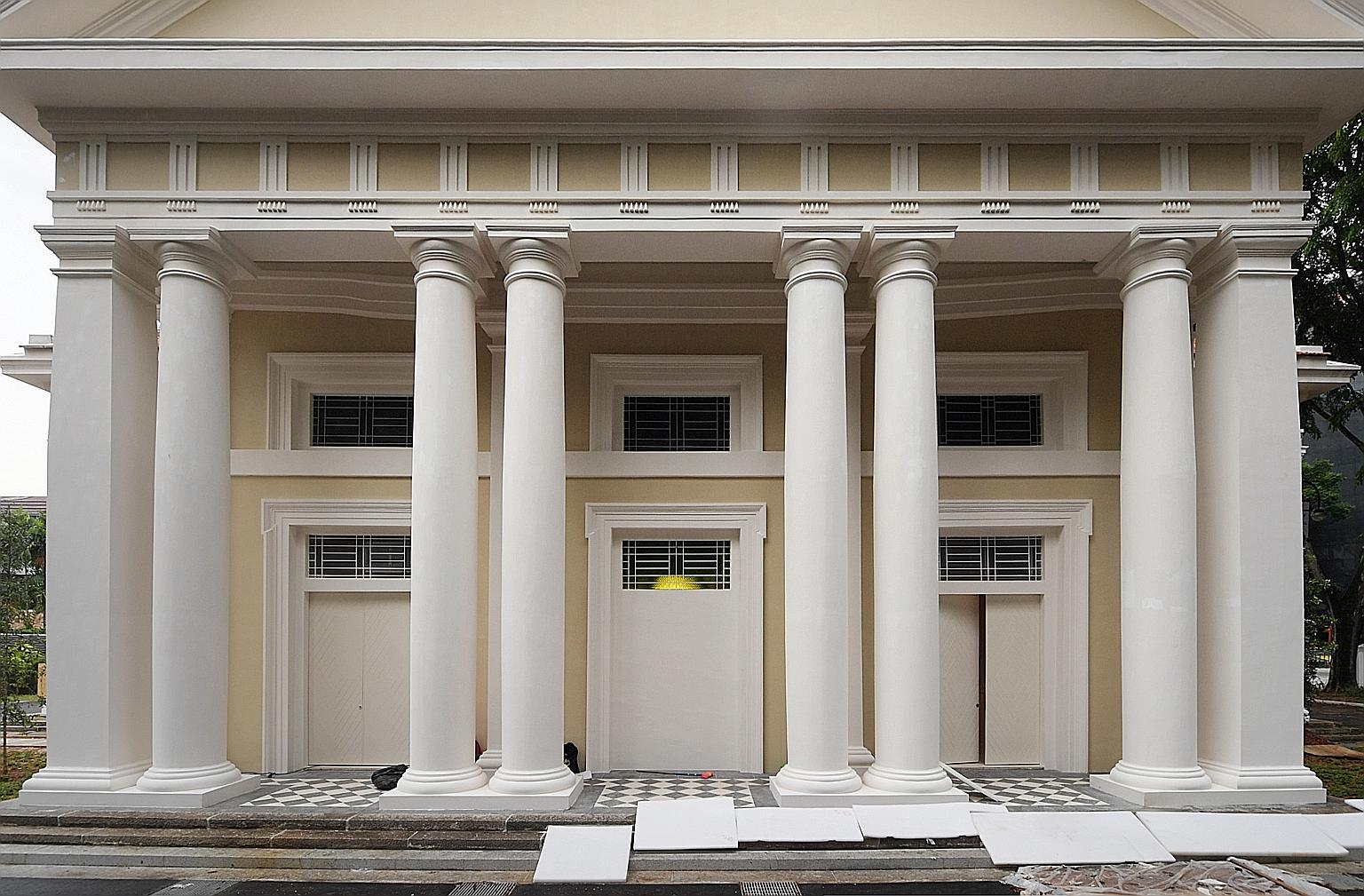
The neoclassical facade of the cathedral facing Victoria Street had to be propped up with timber supports in the final years leading up to the building’s restoration. The structure has since been repaired and strengthened, and the brown colour scheme repainted in lighter tones.
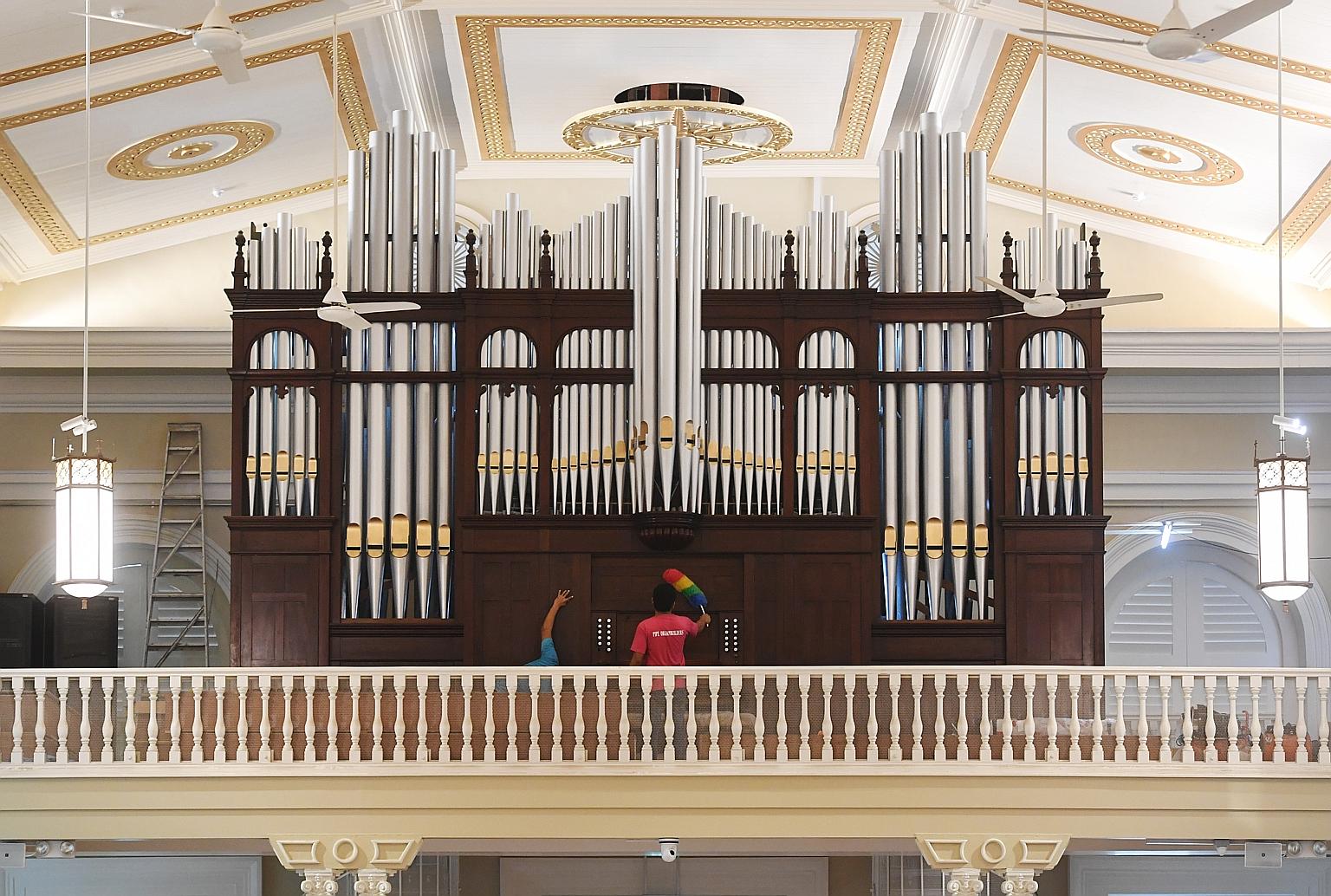
Organ builders from Diego Cera cleaning the case of the restored 1912 Bevington & Sons pipe organ. The century-old instrument was taken apart and moved to a workshop in Las Pinas, the Philippines, where it was cleaned and rebuilt, then shipped back here and re-erected. Its 1,882 pipes are now being tuned in preparation for the opening mass on Nov 20.
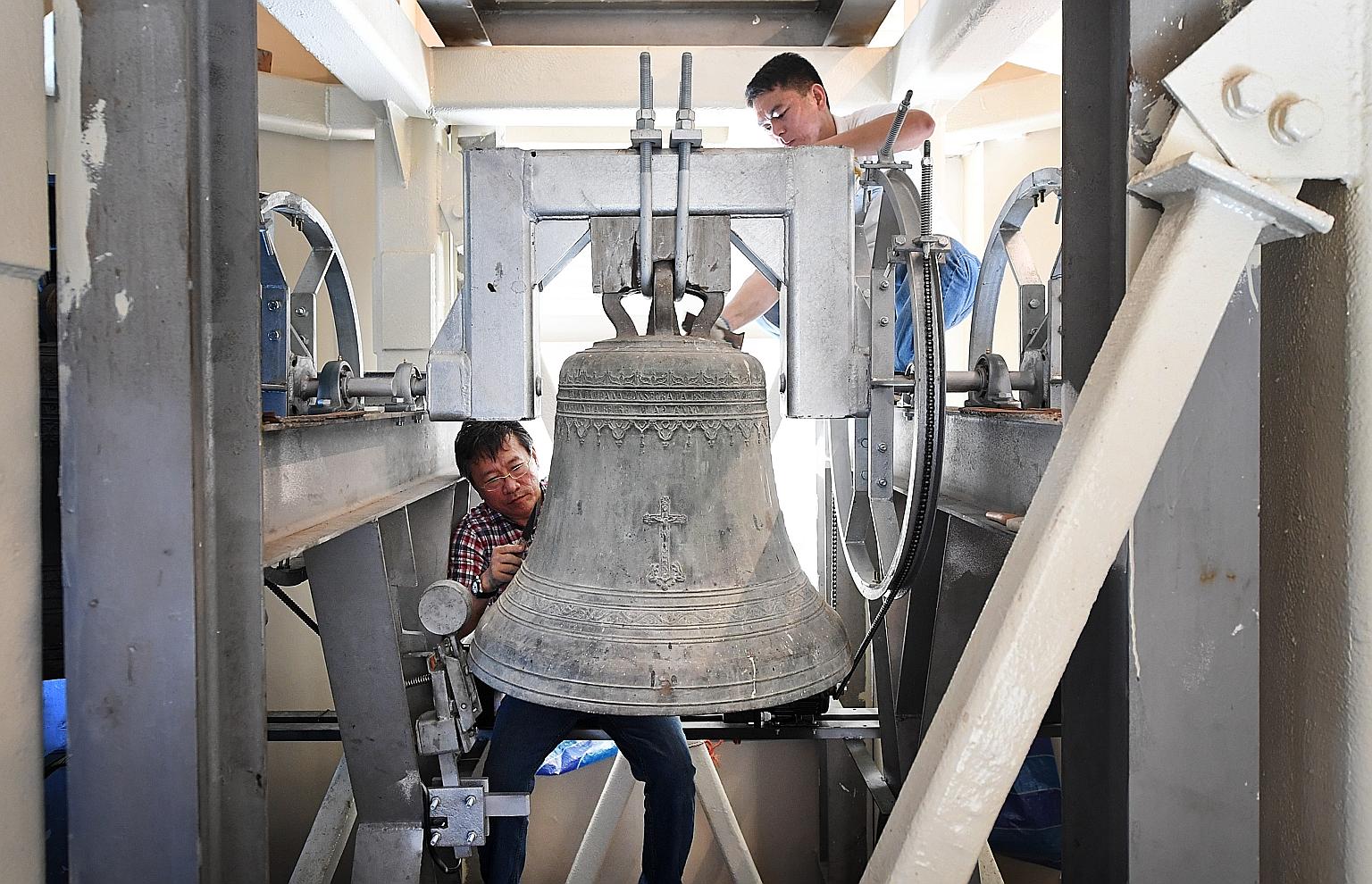
Mr Roster Wu (left) and his assistant Raul Oliveiros working on the largest of three bells in the cathedral steeple. These 19th-century bells were cast by Crouzet-Hildebrand of Paris and have been restored for swing chiming. For many years, the bells had been fixed in position and chimed by a striker hitting the soundbow on the lower part of the bell.
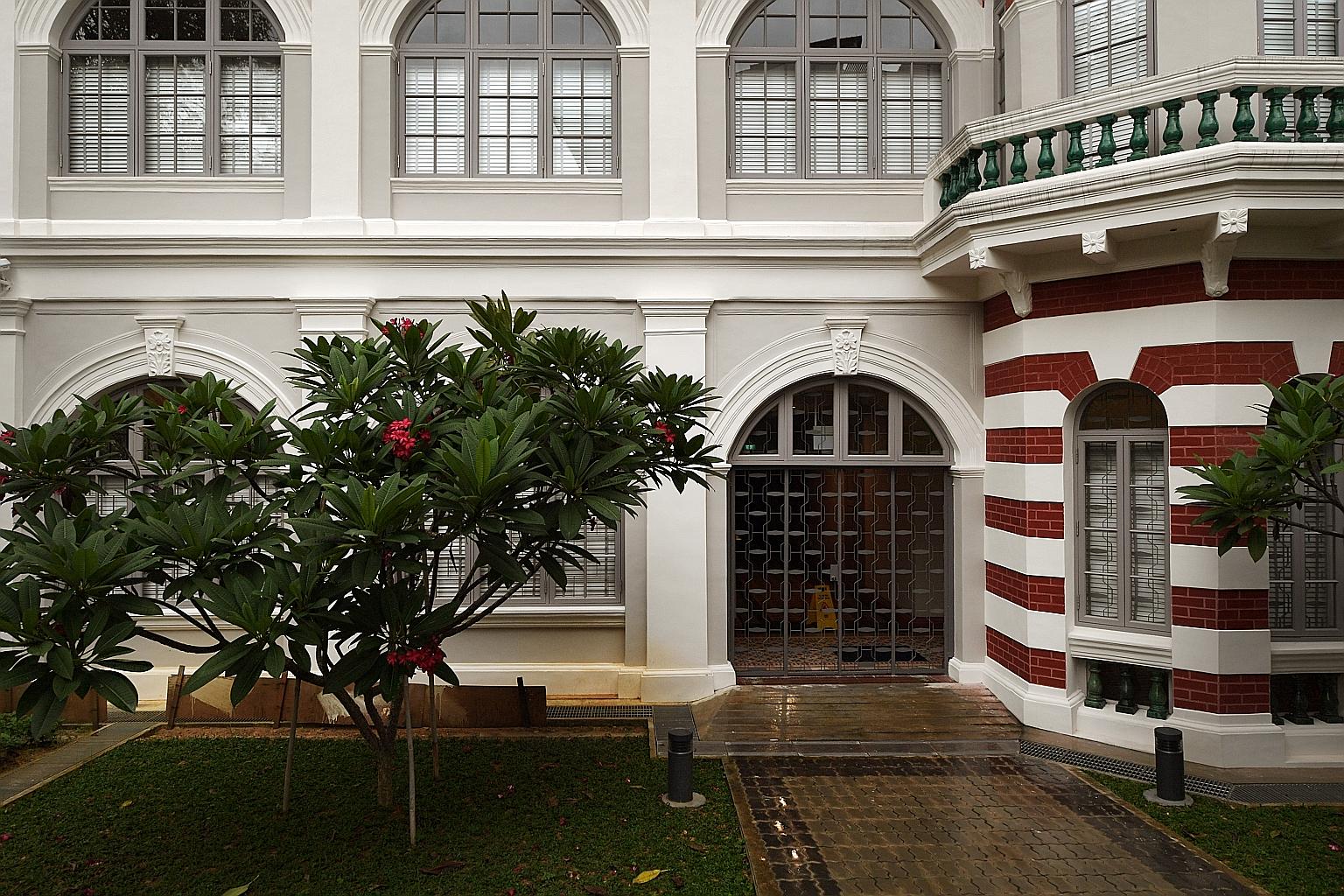
The restoration of the 1911 Edwardian-style rectory was completed last year. The building, which houses the priests’ residence, features alternating bands of brickwork and white plaster, similar to the Central Fire Station in Hill Street which was itself built in the early 20th century.
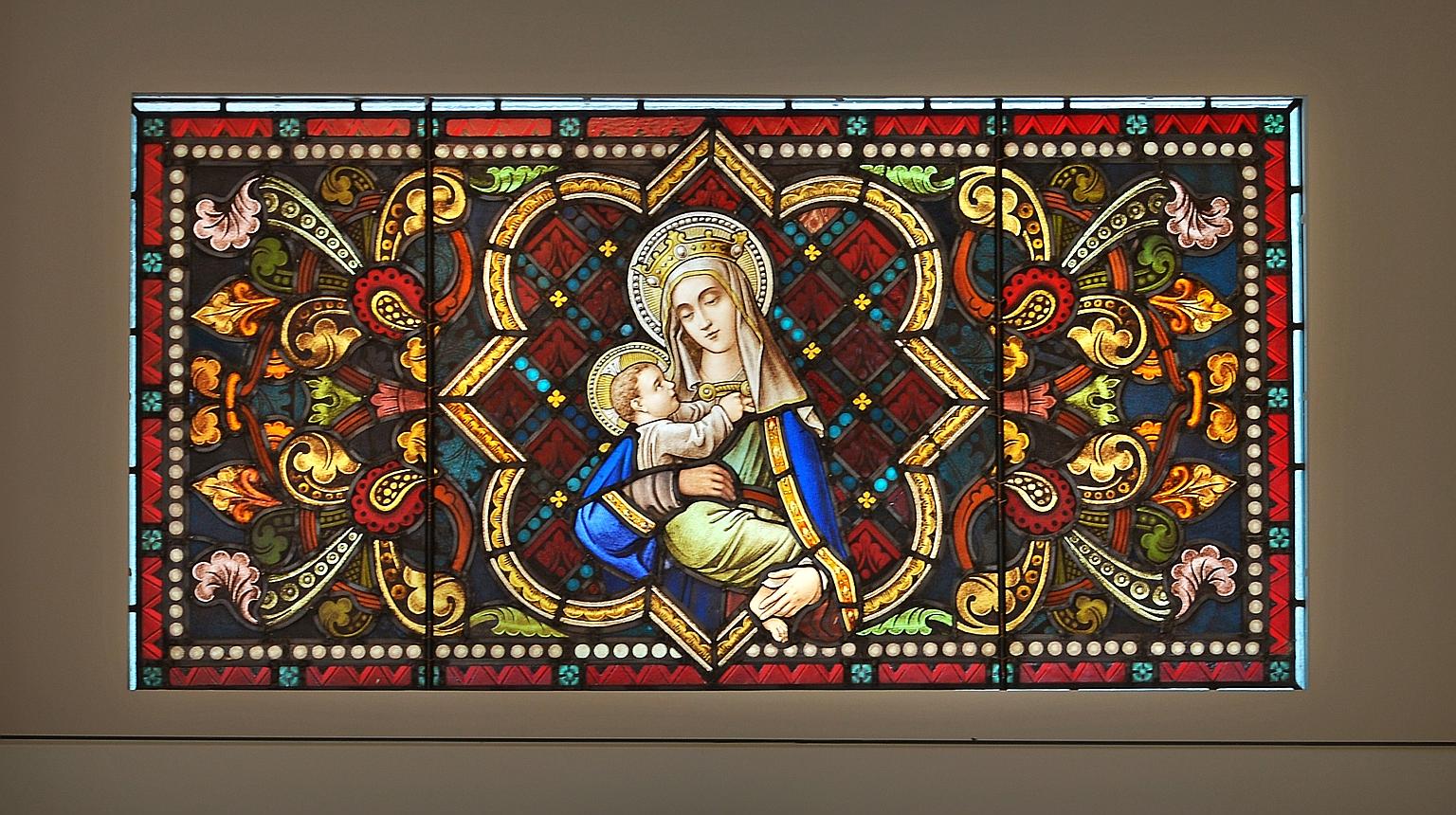
A stained glass panel featuring the Madonna and Child. It is one of two figurative pieces in the cathedral, the other being that of St Joseph. The arm of the Madonna, which had broken off and was missing, was restored by The Glass Studio led by Ms Swati Chandgadkar, who had also worked on the stained glass panels of St Andrew’s Cathedral.
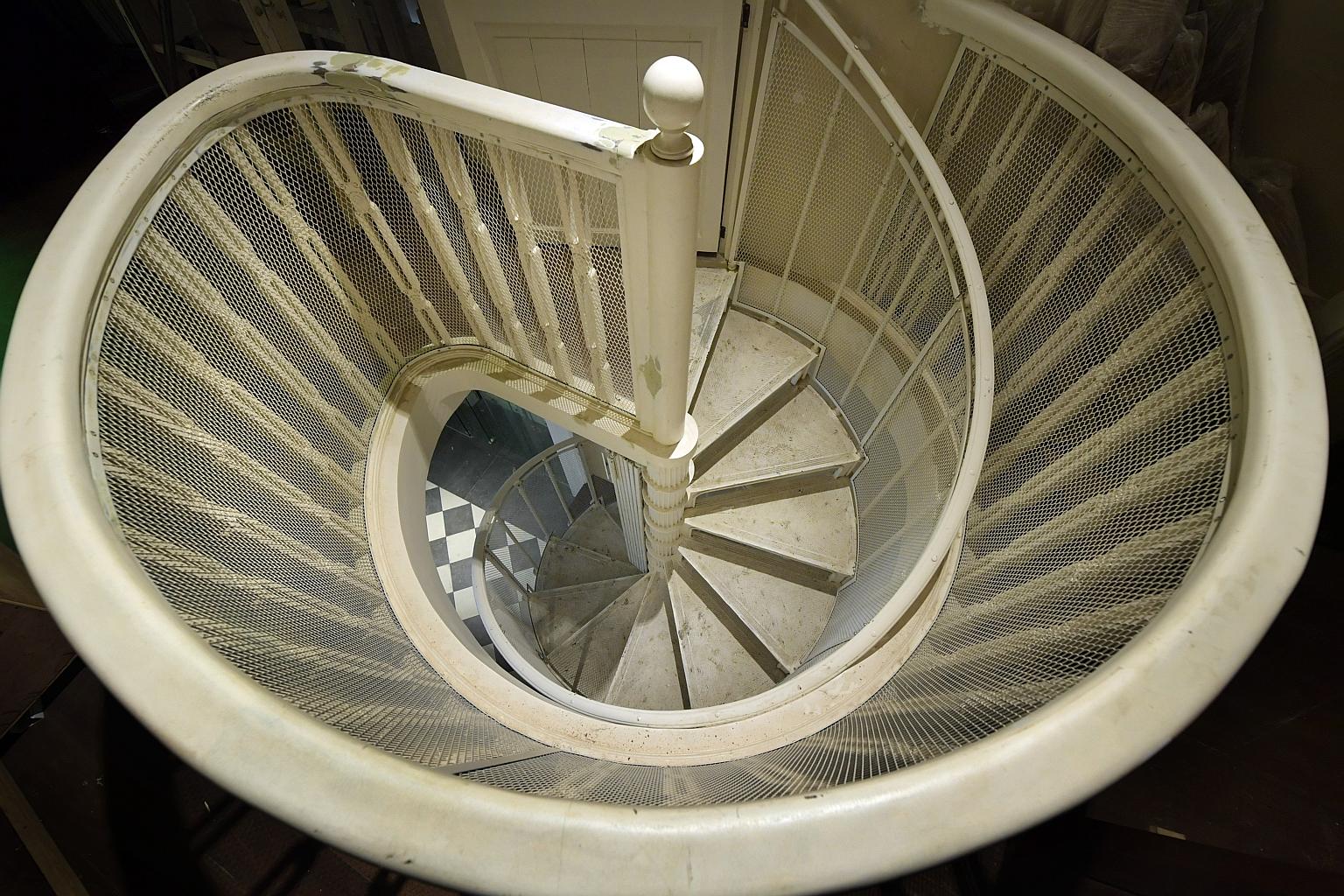
One of two late 19th-century cast iron staircases leading up to the gallery of the cathedral which houses the 1912 Bevington & Sons pipe organ. For many years, the only people who regularly used these stairs were the organists who accompanied services from the organ console in the gallery.
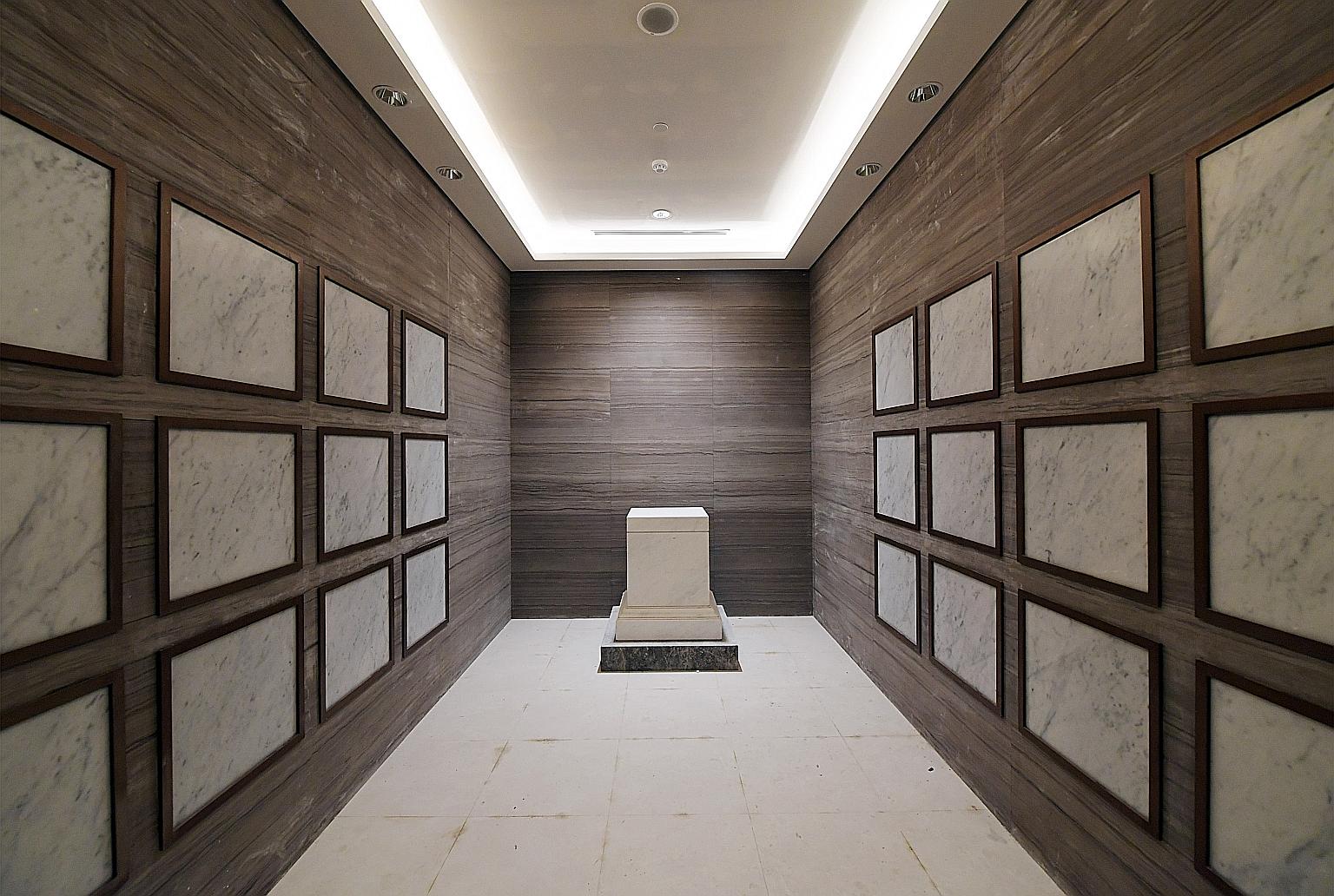
Work on the crypt, located in the basement of the cathedral complex, is nearing completion. It will house the remains of some of the former bishops of Singapore. However, those of the late archbishops Michel Olcomendy and Gregory Yong will remain in the main church, where they were interred in 2008.
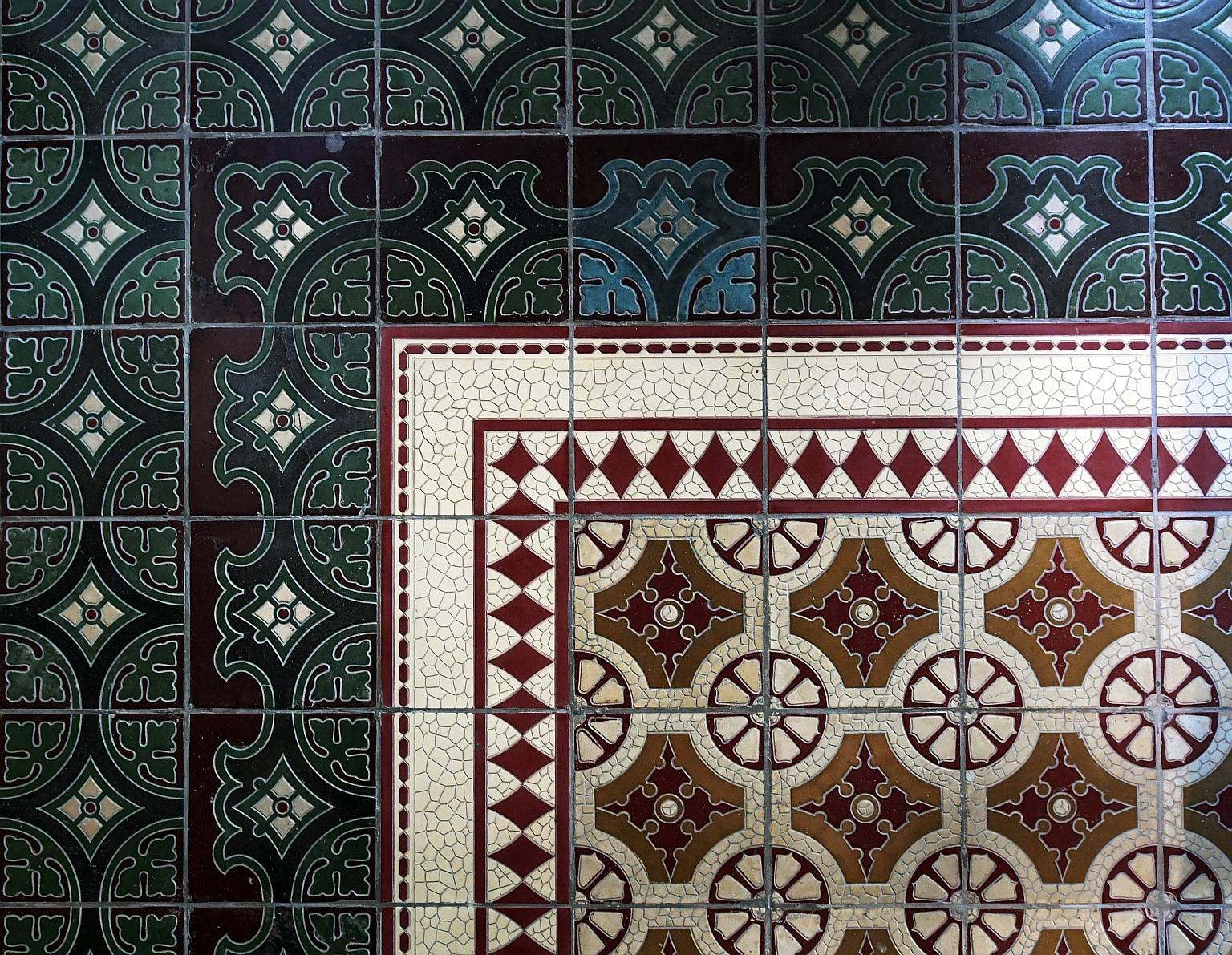
The original encaustic tiles of the cathedral rectory have been carefully preserved. Workers had to remove each one by hand, tag it, clean it, then reinstate it to its original position. Encaustic tiles derive their patterns not from the glaze but from the actual clay in the body of the tile. This means the design does not fade even as the tile is worn down.

